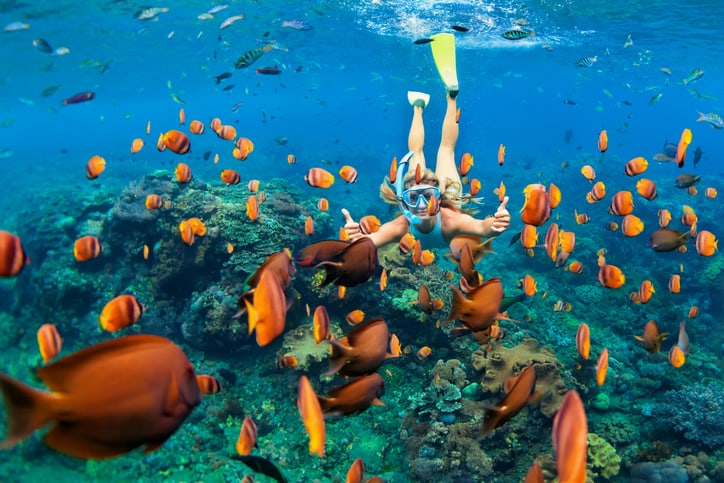With summertime in full-swing, hopefully you’ve been using plenty of sunscreen to keep you safe from the damaging effects of the sun. But, with the overabundance of sunscreen products to choose from, how do you know you’re using the right one?
Experts over and over tell us that it’s important to read the labels. The problem is, these labels are often confusing and misleading. What exactly does “broad spectrum” mean? Is SPF 15 enough or should I be going with SPF 100? The label says, “water resistant” so I don’t have to put more on after I swim, right? It can be a baffling process for even the best label readers.
So, here are some label reading tips that will hopefully help you next time you’re trying to solve the mystery of the sunscreen shelves.
What is “Broad Spectrum” & Why is it Important?
The American Cancer Society recommends always choosing a sunscreen with “broad spectrum” protection, meaning that they protect against both UVA and UVB rays. All sunscreens will protect against UVB rays, which are the main cause of sunburn and skin cancers, but UVA rays also contribute to skin cancer and premature aging. The Food and Drug Administration (FDA) requires that only products that protect from both types of rays can be labeled “broad spectrum.” In fact, products that aren’t broad spectrum must have a warning on the label, stating that they only protect against sunburn, not skin cancer or skin aging.
Should I Go for the SPF 100 or is SPF 15 Enough?
The SPF (sun protection factor) number is the level of protection the sunscreen provides against UVB rays. With regards to this, the American Cancer Society recommends you use a sunscreen that has an SPF of 30 or above. Interestingly, although higher SPF numbers do indicate greater protection, the higher you go, the smaller the difference becomes. For example, SPF 15 sunscreens filter out about 93% of the UVB rays, SPF 50 sunscreens about 98%, and SPF 100 about 99%. It is also important to note that no sunscreen protects you completely. That’s why using other precautions like hats, clothing, and staying in the shade are also important.
Isn’t “Water-Resistant” the Same as “Waterproof”?
Actually, no, “water-resistant” doesn’t mean it’s waterproof. In fact, no sunscreens are waterproof or even “sweatproof,” and the FDA won’t allow manufacturers to make such claims. According to FDA regulations, if a product is labeled as “water-resistant,” it must specify whether it lasts for 40 minutes or 80 minutes while swimming or sweating. Plus, sunscreen usually rubs off when you use a towel to dry yourself, so you will need to re-apply right away. The experts agree that a good rule of thumb is to reapply sunscreen at least every 2 hours, and even more often if you are swimming or sweating.
Now that you’ve got a better grasp on the mysteries of sunscreen labels, I’ve got one more tip for you. Good sunscreens don’t have to be expensive. In fact, places like Target, Walgreens and Walmart all sell excellent sunscreens at affordable prices. Click on the links for each store to get their coupons and deals to save even more!














